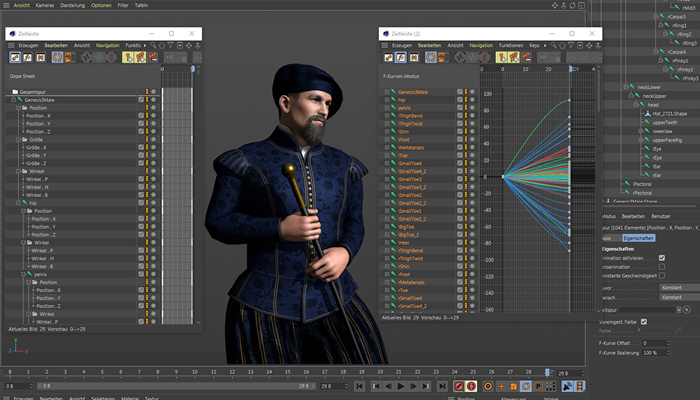Click Here
3D Animation
3D Animation und Filmproduction
From the 3D models and visualisations we create budget-oriented film productions (TV, video, DVD, Internet, museums) or supplementary animation sequences for your production. In compositing, the 3D animations are further processed and, if necessary, combined with real scenes and other effects.
For the audio we work with professional narrators (multilingual), musicians and sound designers (background sounds).
Historical figures - design and animation

Digital sculpting and painting
Sculpting” is a technique used to draw fine details, such as the drape, on a high-resolution copy of the clothing.
The resulting surface is “baked” into a “normal map” (structure simulation of the surface) based on the texture coordinates, so that a material can later simulate these details by means of a texture, even though they do not exist in 3D.
Details and accessories
Clothes make the man
Each to their own outfit
Films for museums, exhibitors and TV
Our small company-owned “render farm” is equipped with powerful servers and numerous workstations. There we are able to realize extensive projects with complex photorealistic 3D models, light and particle simulations in high resolutions and frame rates.
In a large number of projects, we have also dealt with provincial Roman themes for various television productions (e.g. ZDF Terra-X) but also for diverse media productions for monument preservation authorities, museums and state exhibitions.
Here you can see some of our capabilities for the presentation of provincial Roman architecture and animated Roman troop units.
Films for museums, exhibitors and TV
The setting of the scenes must be perfect and correspond to the era. Room or building constructions are created with the help of different templates and resources. Sometimes they are simply graphics or pictures.
We often take scan data of the current building stock (example Fortress Königstein) or building remains in advance and base the reconstruction on real ground plans and landscape models (example Liebenstein Castle).